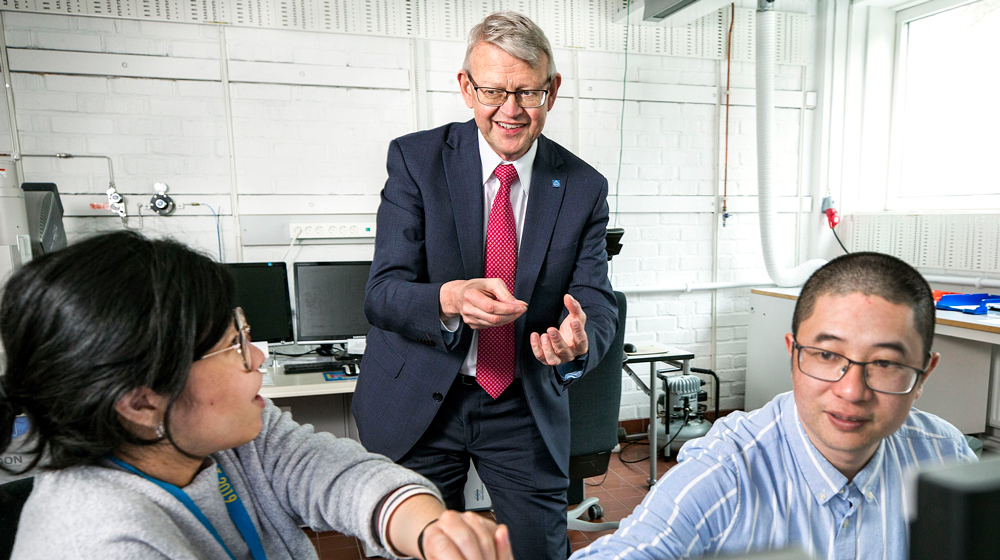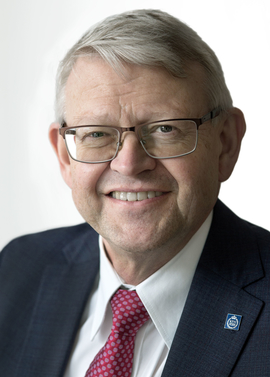Mikael Östling - the warrior of rankings

It is not easy to make oneself heard in the noise of all the research that is published today. Mikael Östling, Deputy President at KTH has been on tour at KTH's research departments to encourage researchers to make their results and publications more visible. A job that never rests if you want to be a top university.
There are no formula to become a top university, but publications are undeniably a way to show off and claim a place in the research community, not only for the individual researcher but also for KTH. How successfully you publish is also a parameter in how a university is ranked. With this in mind, KTH's deputy president Mikael Östling have had Zoom meetings with KTH's departments with the hope of starting a discussion on how to improve publishing, and disseminate results.
"The meetings are not an interrogation. The KTH management does not have a clear strategy that researchers must follow. The researchers know how their specific field works, and each individual group makes their own decisions. However, everyone can always improve, find inspiration from a university that stands out in your field and think about what you can implement. I want to raise questions that lead to a systematic thinking about how and where to publish - and how to popularize research so that it reaches the public. ”
Mikael Östling himself has published more than 500 scientific articles over the years in the field of electronics (and has an H-index of 49, according to Google Scholar). Since he joined KTH in the 80's, he has seen how publication data has grown in importance, especially noticeable after the turn of the millennium, he says.

The KTH management is now initiating work to review the distribution of resources[MOU1] . Today, a share of money is distributed to the research departments based on a formula that is not completely transparent. Mikael Östling is hesitant about the current system with financial support - it doesn’t motivate researchers to publish in the best way possible, he says.
"It shouldn’t focus on the number of publications, that doesn’t measure excellence. Often fewer but more significant papers is better."
Mikael Östling wishes, for example, that KTH improves when it comes to interdisciplinary publishing. Today, so much research is published that it takes a lot before you get attention beyond the ordinary.
“Today research must be groundbreaking. Some individual results simply aren’t interesting enough on their own. But if you put them into a context with other parts from different areas into something bigger - then you can get revolutionary results. "
Mikael Östling thinks it is important to inspire researchers to become good at spreading research findings to the public as well. But you must dare to popularize your results, maybe use modern communication methods, such as video and your social networks and your own channels.
However, explaining research and its impact, is not always easy, but of great importance if you’re interested in winning the large EU grants. That is why the Research Support Office, RSO, is is about to set a strategy in offering writing assistance for these grants.
The meetings with the KTH departments are soon over with - for this time - and they have been rewarding, Mikael says. He’s impressed with having met such a large mix of employees - both the "usual bunch of professor", but also researchers at the beginning of their careers.
Not least, he appreciates the sincere discussions between KTH's management and the research groups:
“You learn how people think and what they see of the management. There is a need for 'real' communication for us to understand each other's situations. Otherwise, we risk that the only contact people have with central KTH only consists of formal information. ”
So, what’s the next step in the process of sharpening KTH's publication strategies? The plan is to constantly challenge the research groups and monitor the progress:
“You can return to a research group in two years and the constellations have totally changed. Just like the communicative conditions. That is the charm of KTH: with its flow of people, it changes all the time. So there is no end to this work. ”
Text: Anna Gullers
